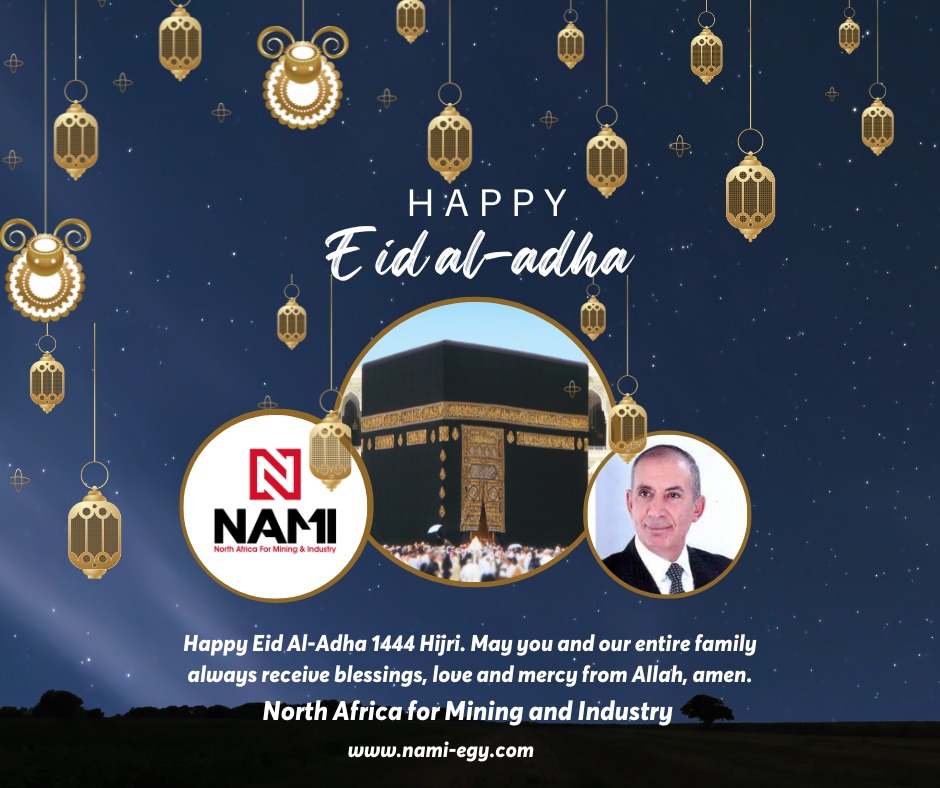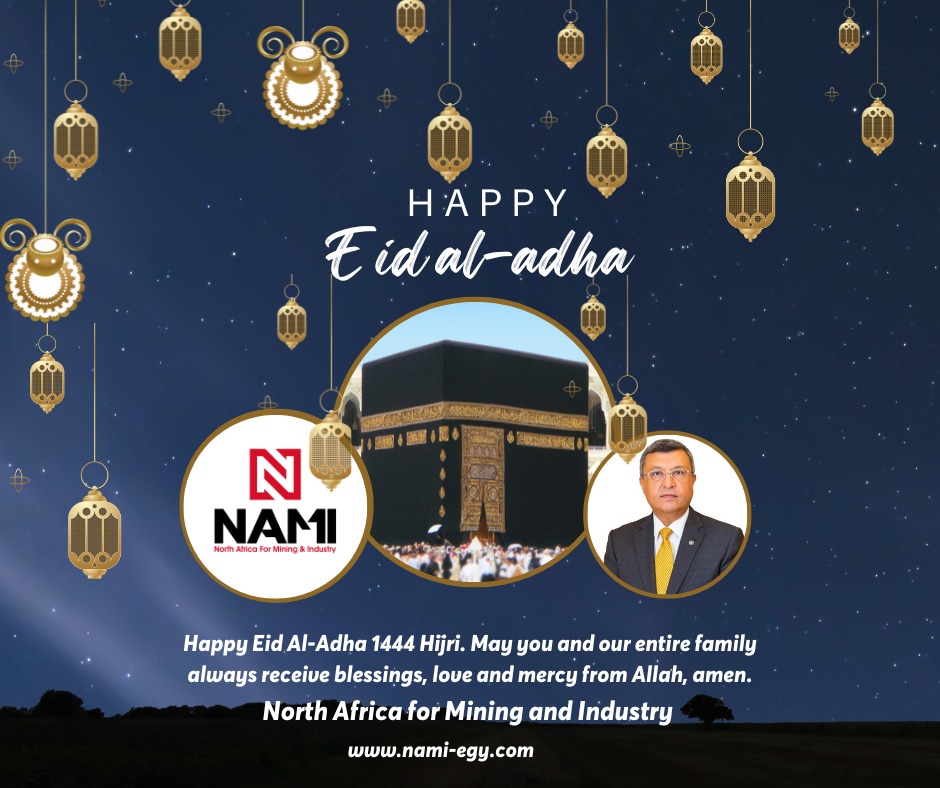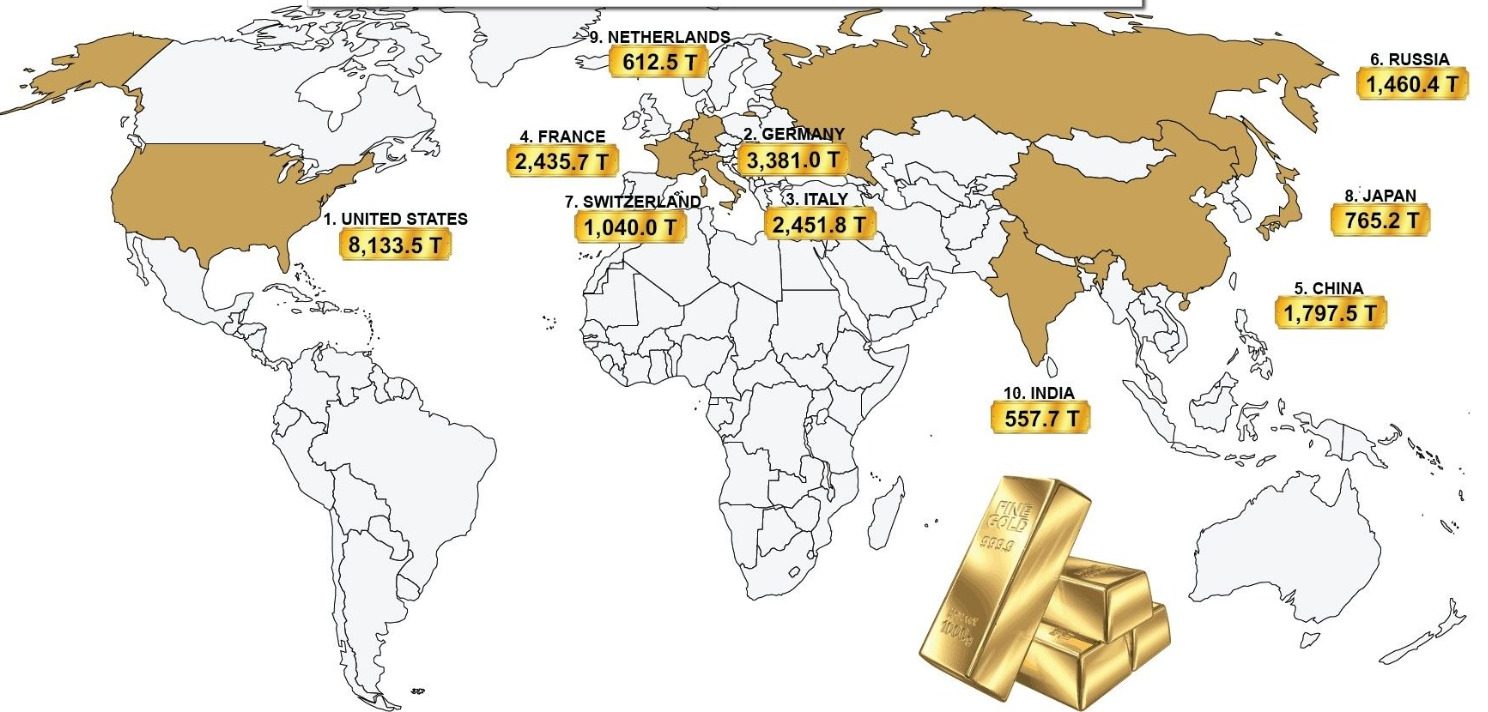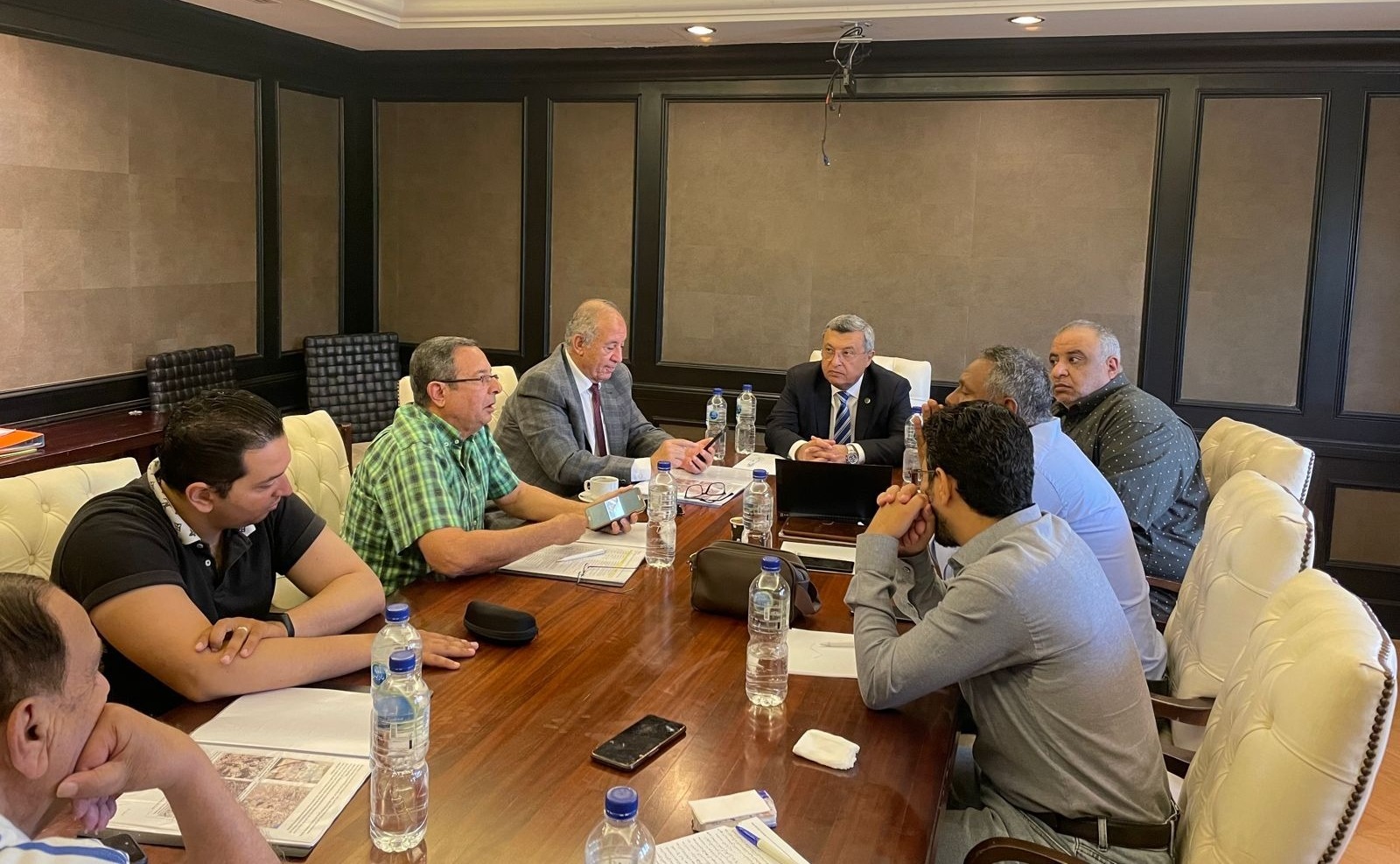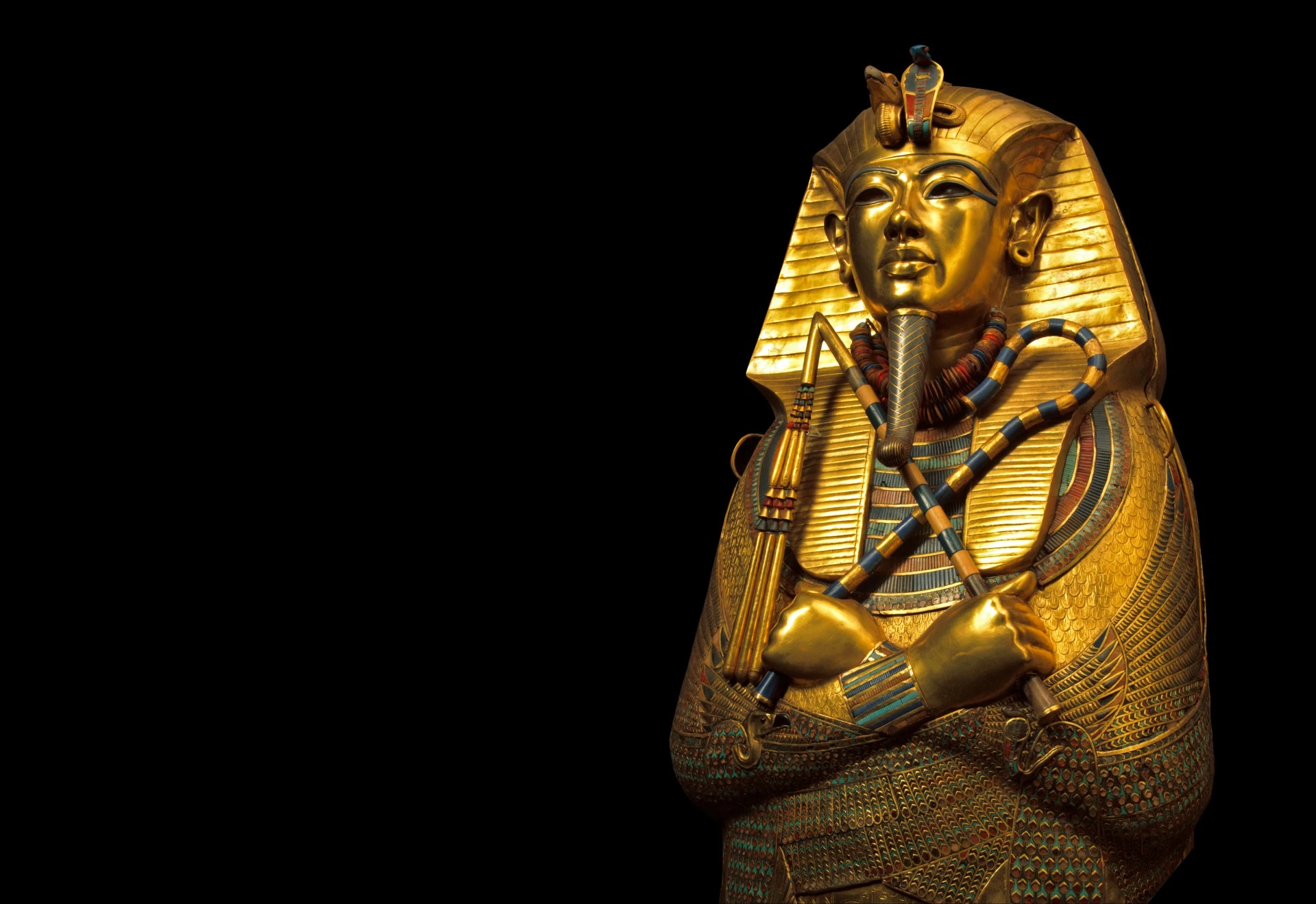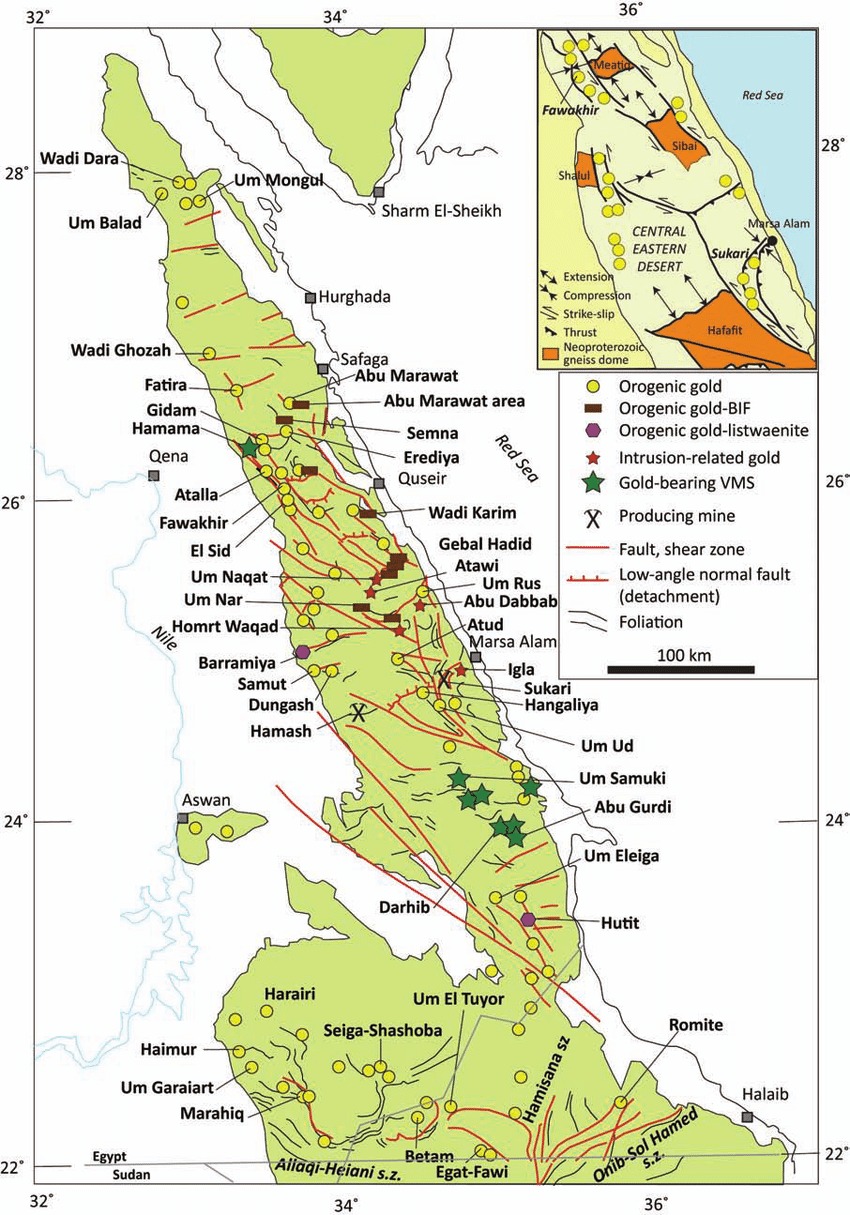
Egypt has promising opportunities to be among the world’s largest producers, exporters, and manufacturers of gold. Gold production in Egypt is concentrated in three locations, all of them in the Eastern Desert, parallel to the coastal strip of the Red Sea: Jabal al-Sukkari, the Hamish area, and Wadi al-Alaqi, next to the Golden Triangle area between Safaga and al-Qusayr. 94 gold sites, including the Jabal Sibai site, fall within the scope of the search and exploration work for the North African Mining and Industry Company, according to the first global bid announced by the Mineral Resources Authority on Thursday, November 19, 2020
Map of gold mines in Egypt
Diabetic mine
A huge gold mine is located in the Jabal al-Sukari area in the eastern desert, 30 km south of Marsa Alam. It was discovered in 1995, and work began in 2009. An integrated factory was established to produce gold, silver, and copper in the region, and it is one of the 10 largest mines in the world in terms of reserves. And production, as the value of the reserves currently in it is estimated at about 14.5 million ounces, and approximately 83 tonnes of gold have been produced since 2010 until now, with an estimated value of about $7.2 billion, with an average production of 250 thousand ounces in the first year, increasing to 530 thousand ounces annually. The project’s investments amount to about $1.7 billion, and it will accommodate about 4,500 direct and indirect job opportunities
Hamas mine
It is located 100 km west of the city of Marsa Alam in the Eastern Desert, near the Wadi El-Gemal Reserve in Hamata. The first experimental gold ingot was produced for the first time in Egypt from the mine in 2007, and the production in February 2010 reached about 65 kg
Wadi Al-Alaqi Mine
It is located 250 km southeast of the city of Aswan, in southern Egypt, and the results of exploration were fruitful in the areas of Sega, Umm Shashouba, and Haymur, where gold was discovered in economic quantities and at high concentration rates ranging from 2 to 4 grammes per tonne
Atoud mine
It is located about 55 km west of Marsa Alam and 5 km south of the Edfu-Marsa Alam road. Gold is found in the gold-bearing veins of Maro, spread over an area of about 9 km2, confined to gabbro rocks forming Mount Atoud
El-Bramya mine
It is located at the 105th kilometer east of the city of Edfu and is crossed by the Edfu-Marsa Alam road. There is gold metal in the veins of Marw, which are irregular in shape and thickness. It is considered one of the largest and richest gold mines in Egypt. The reserve estimate is located in three ranges. The first range contains 14.8 million tonnes of ore with a percentage of 1.07 gm gold per tonne and contains an amount of gold of 16 tonnes, while the second range contains 1.22 million tonnes of ore with a gold ratio of 2.85 gm per tonne and contains an amount of gold of 3.5 tonnes, and the third range contains 0.5 million tonnes of ore with a proportion of gold of 3.00 gm per tonne. It contains 1.5 tonnes of gold
Fatiri mine
It is located at the 30th kilometre north of Safaga-Qena Road, and there are gold reserves of about 70,000 tonnes, with an average gold content of 14 g per tonne
Abu Marwat mine
It is located to the south of the Safaga-Qena road near Jabal Abu Marwat and to the northeast of Wadi Abu Marwat, one of the branches of Wadi Samna. It contains gold and silver minerals associated with minerals of zinc, lead, and copper, with a reserve size of 290 thousand tonnes and a gold ratio ranging between 3.8 and 7.7 g per tonne. And silver ranging between 43.3 and 102 g per tonne
Samna mine
It is located south of the Safaga-Qena road, and there is gold in the veins of white quartz, which bear gold, with a reserve size of about 10 thousand tonnes and an average gold content of 15.5 g per tonne
El-Ardya mine
It is located south of the Safaga-Qena road. The mineral is found in gold-bearing quartz veins with a volume of about 20 thousand tonnes and an average gold rate of 7.75 gm per tonne, in addition to about 50 thousand tonnes of ore with an average of 2 gm per tonne
Hmama mine
It is located approximately in the middle of the distance between Qena and Safaga, 45 km south of the Qena-Safaga road. There is gold and silver in the Gosan range, and it consists of oxides and carbonates resulting from the oxidation of sulphides of zinc, copper, and lead. The percentage of gold in surface samples ranges from 0.1 to 5.5 g per tonne, while the percentage of silver ranges from 0.2 to 18 g per tonne
Umm Oud mine
It is located 55 km southwest of the city of Marsa Alam and 6 km west of Sabahiya. Gold is found in white-grey quartz veins. The volume of reserves is 15,600 tonnes, and the proportion of gold is 22.7 g per tonne
Umm Samra mine
It is located 60 km northeast of Al-Baramiya and 45 km on the Edfu-Marsa Alam road. Gold is found in the gold-bearing quartz veins at a rate ranging from 0.5 to 12 g per tonne
Samut mine
It is located in the southeast of Al-Baramiya, about 45 km to the south of the Edfu-Marsa Alam road. Gold is found in gold-bearing quartz veins, with an average of 10 grammes per tonne. Gold is also found in the transformation zones associated with quartz veins, with an average of 2.5 grammes per tonne
Dengash mine
It is located south of the Edfu-Marsa Alam road. Gold is found in quartz veins at a rate ranging from 1 gramme to 21 grammes per tonne. Gold is also found in the transformation zones associated with quartz veins at a rate ranging between 0.5 and 3.7 g per tonne
Halayeb and Shalatin areas
The Halayeb and Shalatin regions contain rocks full of gold. Al-Anbat Mountain extracted 7 kg of it in the form of a gold vein, and another vein weighing 6 kg came from another region of the same mountain
golden triangle
There are also 94 gold sites in the Golden Triangle region, which is located in the Red Sea Governorate, including the Jabal Al Sibai site, which falls within the scope of the research and exploration work of the North African Company for Mining and Industry
